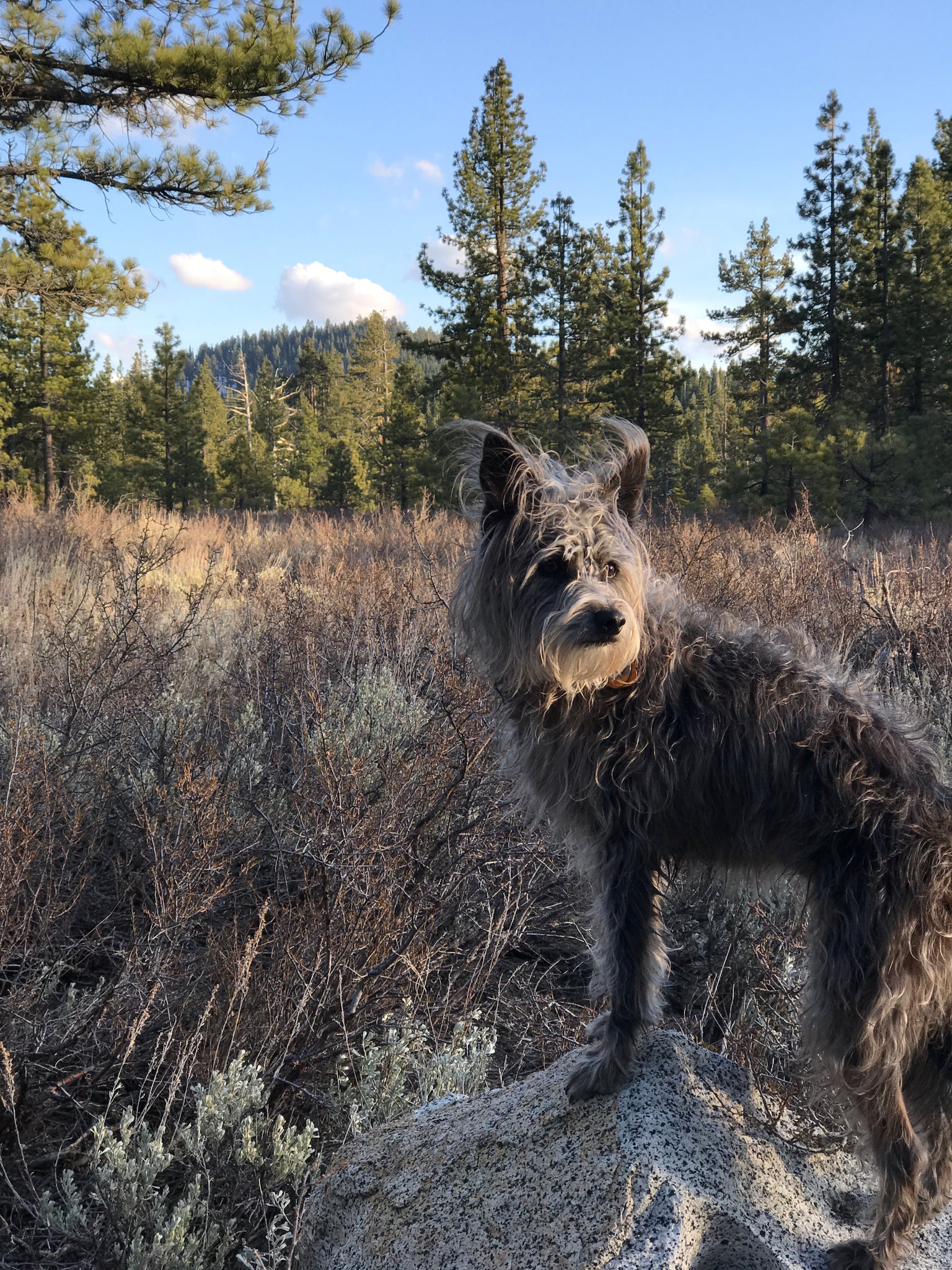
Trees & Tails™
After my dog Kashi entered my life, my biggest inspiration for founding Timberdog® was to see our natural world thrive, so that we can continue to enjoy our outdoor spaces with our families and pets. I go hiking and camping often, and feel heartbroken to drive by entire forests reduced to stumps from logging, or burned down by massive fires. I didn't grow up with these constant ecological missteps and disasters, so to see all of this destruction in real time is truly alarming.
As an entrepreneur living in this age, it's my duty to cement my company as a zealous steward of our ailing earth. In that vein, I feel that carbon neutrality, a defensive position, isn't an aggressive-enough goal. Instead, I strongly believe that businesses need to adopt an offensive strategy; that is, attain carbon neutrality as a baseline achievement, and from there, strive to become carbon negative. In other words, my desire for Timberdog® is to be like a tree - to put out more oxygen than carbon and be a benefit to the world.
It's an audacious vision. How will we carry it out? I asked Aniket Bansal, our Carbon Sequestration Scientist, to do a study on how many trees we would have to plant per RuffRest® sold, to achieve carbon negativity. For our purposes, we went with the medium size RuffRest® as the average of all sizes and likely the most popular size to be sold. Once we figured out our our carbon-neutral baseline (one tree planted per pet bed), we added a tree on top of that to be "net oxygen positive."
This method is currently the closest approximation of carbon emissions and sequestration we've been able to achieve, as there are variables that are difficult to impossible to account for, such as finding the best species of tree to plant (there's limited data out there), and the fact that trees give off CO2 at night (compounding the difficulty of assessing their overall sequestration values). The quantity of carbon dioxide sequestered can vary from season to season, year to year, as well. However, as the science evolves, we will tighten the current study and come up with even better ways to tackle this modern problem.
The study Bansal conducted used the White Pine Tree (native to Eastern North America), as this species had the most data for our purposes. Though I live in California and won't be planting the Eastern White Pine, I hope I can achieve similar effects with coniferous trees native to the west coast and various other trees beyond.
Our partner for this initiative is One Tree Planted, who will use a portion of our proceeds to plant two trees for every RuffRest® sold Kashi the Timberdog™ drying off after a dip in Lake Tahoe
Kashi the Timberdog™ drying off after a dip in Lake Tahoe
 Kashi the Timberdog™ drying off after a dip in Lake Tahoe
Kashi the Timberdog™ drying off after a dip in Lake Tahoe